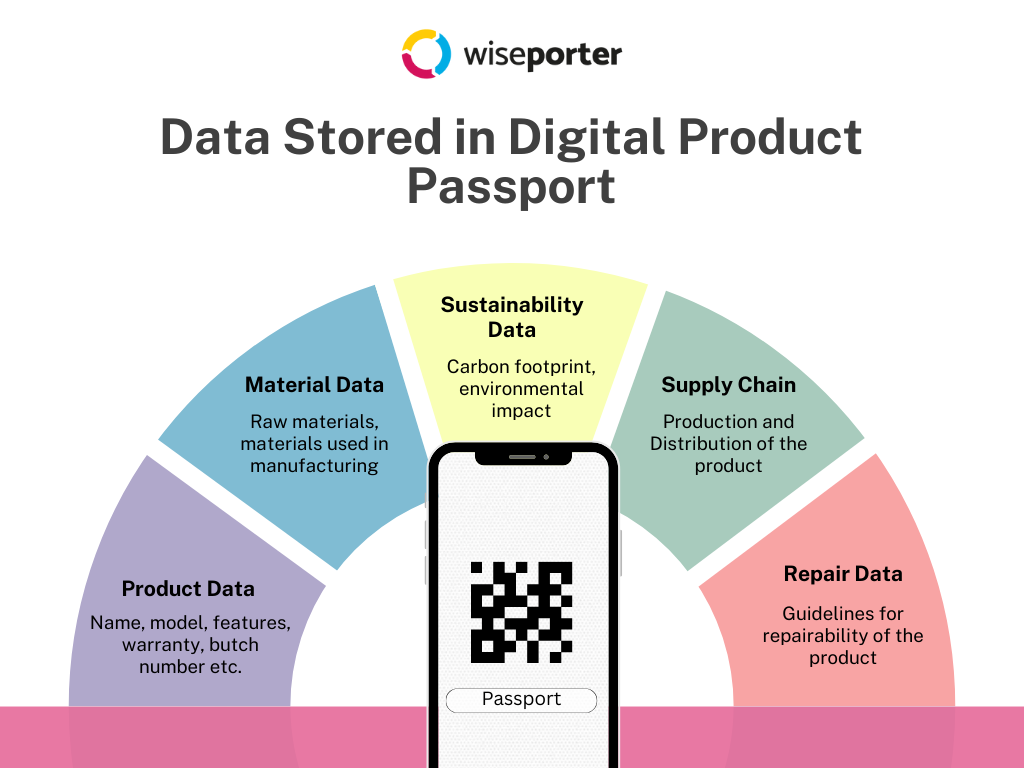Digital Product Passport and PIM System: The Path to Sustainable Revolution
Introduction
In 2023, the European Commission introduced Digital Product Passports (DPP) as a key element in tracking a product’s lifecycle—from the product’s origins to its environmental impact. DPPs aim to improve the transparency and sustainability of the supply chains and let consumers make informed and eco-friendly choices.
However, implementing DPPs will involve challenges such as managing a wide range of data and technological integration. This article will explore DPP, and the role of Product Information Management (PIM) systems in their implementation.
What is a Digital Product Passport (DPP)?
A Digital Product Passport (DPP) is a detailed digital record that tracks key information about a product throughout its entire lifecycle. It functions as a virtual passport, providing insights into the product’s origin, materials, manufacturing processes, environmental impact, and disposal. In other words, it tracks key details about the product from start to finish. This information is crucial for consumers, businesses, and regulators who are increasingly prioritizing sustainability and transparency.
What data will be stored in DPP?
The data stored in DPP may vary based on the product itself. However, most commonly they will include:
- Product Origin: Details on where the product was manufactured and the source of its raw materials.
- Materials Used: A breakdown of all materials and components, including their environmental impact.
- Lifecycle Data: Information on the product’s manufacturing, distribution, usage, and disposal phases.
- Environmental Impact: Data on the product’s carbon footprint, resource usage, and disposal practices.
How will be DPPs accessed?
DPPs will be typically accessed through digital interfaces like:
- QR Codes: Consumers scan them to retrieve product information instantly.
- NFC (Near Field Communication): Allows data transfer through close-range communication.
- RFID (Radio-Frequency Identification): Used for tracking products and accessing data wirelessly.
Goals and Benefits of DPP
- Product Transparency: DPPs provide a clear and detailed view of a product’s lifecycle, helping consumers make informed choices.
- Sustainable Consumer Choices: By highlighting environmental impacts, DPPs encourage the purchase of sustainable products.
- Circular Economy Efforts: DPPs play a crucial role in promoting recycling and reuse – key components of a circular economy.

Who’s impacted by DPP?
The introduction of DPP affects different groups, let’s take a look at a simple case study with the textiles industry as an example:
A clothing brand creates jackets and uses a DPP to collect data like materials, production location, and environmental impact. This data can be stored in their PIM system as well.
The retailer displays this information online via a QR code. When a consumer scans it, they can view details about the jacket’s sustainability and make informed purchases.
Regulators easily verify the company’s compliance with environmental laws using the DPP data. Meanwhile, suppliers contribute information about fabric production, ensuring the product’s entire lifecycle is transparent and traceable.
Apart from the textile, additional sectors will be included in the DPP:
Batteries
Electronics
Construction Products
Other Products (further products will be announced by the EU)
Potential Implementation Challenges
Implementing DPP might be an obstacle because of the complexity of managing vast amounts of product data. Ensuring this data is accurate and consistent across all stages of a product’s lifecycle is critical but difficult, especially in complex supply chains. Overcoming these challenges is essential for the successful adoption of DPPs. The implementation of the EU’s DPP is still in the early stages, however, companies can already prepare for the upcoming impact. And that’s where the PIM System comes into play!
Solution for DPP with PIM Systems
Product Information Management (PIM) systems will play a crucial role in the successful implementation of Digital Product Passports. The PIM system centralizes and manages all product data, making it ideal for handling the extensive and detailed information required for DPPs. By organizing data in a single source of truth, the PIM system ensures that the information is accurate, consistent, and easily updated.
Key Roles of PIM in DPP Implementation:
Centralization of Data
The PIM system, such as WisePorter, acts as a central hub for all your product information. Instead of having data scattered across different departments or systems, the PIM system gathers everything in one place. This centralization is particularly beneficial for Digital Product Passports, as it ensures that all the necessary product data is easily accessible and consistently managed. By centralizing this information, companies can quickly compile and update DPPs. This reduces the time and effort required to maintain these passports and helps companies comply with sustainability regulations more efficiently.
Data Automation
Managing product data manually can be a huge task, often requiring a lot of time and effort. With the PIM system, much of this work can be automated. For example, the system can automatically collect new vendor product data, check it for errors, enhance it with additional information, and then distribute it to the necessary channels. For DPPs, this means the information is always correct and current, reducing the chances of mistakes. Automation also frees up your team to focus on more important tasks, like improving products, rather than dealing with data entry.
Sustainability Data
Today, customers want to know about the environmental impact of the products they buy. Managing this sustainability data can be complex because DPP will involve tracking details like carbon footprint, material sources, and recycling options. PIM ensures that all relevant sustainability information is included, so you’re not only meeting regulatory requirements but also storing important information for customers to make eco-friendly choices.
System Integration
Product data doesn’t exist in a vacuum; it’s often linked to other systems in a business, like ERP (Enterprise Resource Planning), and other similar systems. The WisePorter PIM system can seamlessly connect with these systems. This means that when you update product data for DPP in one system, it automatically updates in all other connected systems.
Data Onboarding and Sharing
Bringing new product data into your system and sharing it with others can be time-consuming. The PIM system simplifies this process. It streamlines how you onboard new data—making it quicker and easier to add new products or update existing ones. Once the data is in the system, it can be easily shared with anyone who needs it, whether that’s another department within your company or external partners. This keeps your Digital Product Passports up-to-date and ensures that all stakeholders have access to the latest information.
Conclusion
Are you prepared for the future of product transparency? Don’t wait until new regulations catch you off guard. Let us show you how a PIM system can help you organize your data and meet the growing demand for Digital Product Passports. WisePorter’s PIM solutions can help you stay ahead, comply with standards, and build trust with your customers.
Shift your business from operations to strategy and try our FREE DEMO version now!




